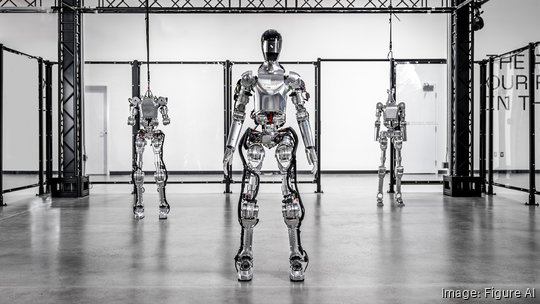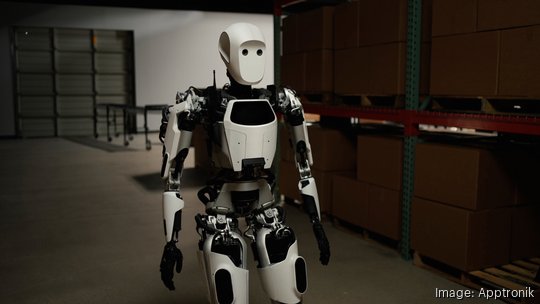
If you thought the future would resemble the TV show "The Jetsons," you're probably wondering where everyone's flying cars are. But one element of "The Jetsons" is becoming an increasingly prominent piece of our lives: Rosie the Robot.
Humanoid robots, like Rosie, have been around for decades but are seeing accelerated development from tech firms as artificial intelligence makes these human-like bots more powerful and useful — from doing work on the factory floor to folding laundry.
Venture funding for such startups is on the rise, fueled by a $675 million fundraising round from Figure AI in February. Figure AI's humanoid robot is designed for commercial operations and already has a deal with BMW to explore potential use cases for its robots in the carmaker's factories. Figure's backers include a who's who of tech titans, including OpenAI, Nvidia, Microsoft and Amazon founder Jeff Bezos.
Figure's robot — which has two arms, two legs, two hands and a screen for a face — will be the first human-like robot to join an automotive line, the company said.
Figure isn't the only AI-powered humanoid robot under development. Tesla announced in December the launch of its latest "general purpose" human-like robot, Optimus Gen 2, which aims to complete tasks for humans that are "unsafe, repetitive or boring," like folding T-shirts.
Tesla CEO Elon Musk has said he expects the cost of an Optimus robot to eventually be half the cost of Tesla vehicle.
Other humanoid robots include Digit, a robot from startup Agility Robotics that's currently working with Amazon to test its humanoid robot in warehouses. Austin, Texas, startup Apptronik last year unveiled Apollo, a humanoid robot that can lift up to 55 pounds. Its primary function so far is moving boxes around in warehouses.
1X Technologies, a Norwegian startup, raised $100 million from OpenAI and other backers earlier this year for its robot Eve, which is used in logistics and retail operations. Sanctuary AI is the maker of PhoenixTM, a general-purpose robot that has been used in retail stores for cleaning, labeling and folding items. It recently received funding from Accenture.
And companies like Honda and Boston Dynamics have been tinkering away on their humanoid robots for years. Honda first launched its Asimo robot back in 2000 and Boston Dynamics unveiled its Atlas robot in 2013.
Chip giant Nvidia, one of the top beneficiaries of the current AI boom, announced a new humanoid robotics initiative of its own this month. At its developer conference, Nvidia unveiled Project GR00T, a hardware and software platform for bringing generative AI and other artificial-intelligence technologies to humanoid robots.

"The next generation of robotics will likely be humanoid robotics," said Nvidia CEO Jensen Huang at the company's developer conference this month. "It's very likely that the human robotics will be much more useful in our world" compared to traditional warehouse and factory floor robots, as our workplaces are designed for people, Huang explained.
These robots, with their human-like faces and dexterous fingers, are becoming an increasingly common occurrence in the workplace alongside their human counterparts. And the market for humanoid robots is expanding quickly. A recent report from Goldman Sachs said the market for humanoid robots is projected to reach $38 billion by 2035, which is up more than sixfold from Goldman's own projections just one year ago.
Advancements in AI and the increased affordability of robot components have accelerated the timeline, the report said. There could be more than 250,000 humanoid-robot shipments in 2030, Goldman's researchers said, mostly in industrial sectors.
The report also points to jobs that are "dangerous, dirty and dull" as areas of growth for humanoid robots. Industries like mining, disaster rescue, nuclear-reactor maintenance and chemicals manufacturing could especially benefit from these bots, given the danger involved to human employees.
The demand for humanoid robots could potentially reach 1.1 million to 3.5 million units globally, the report said.